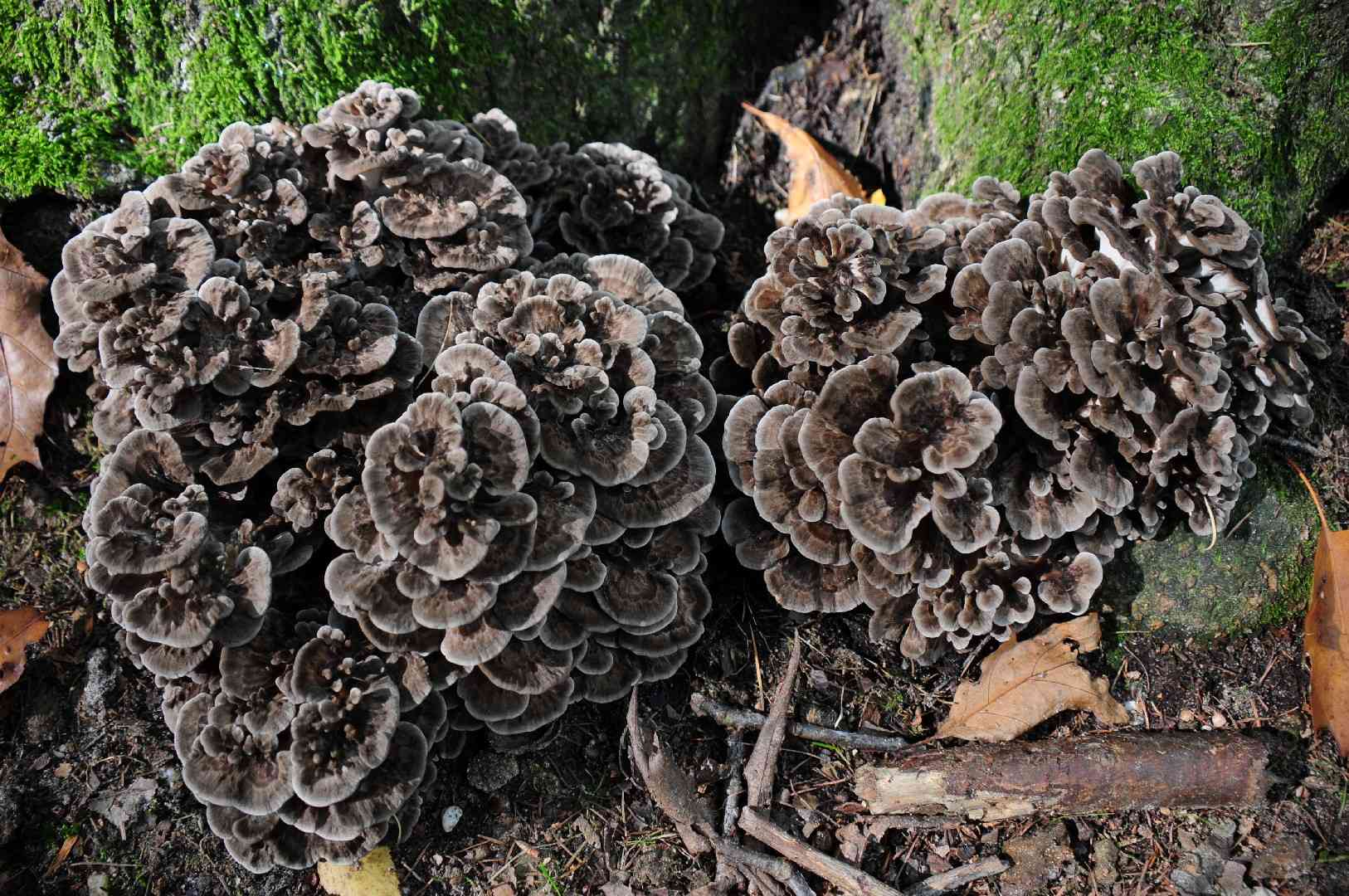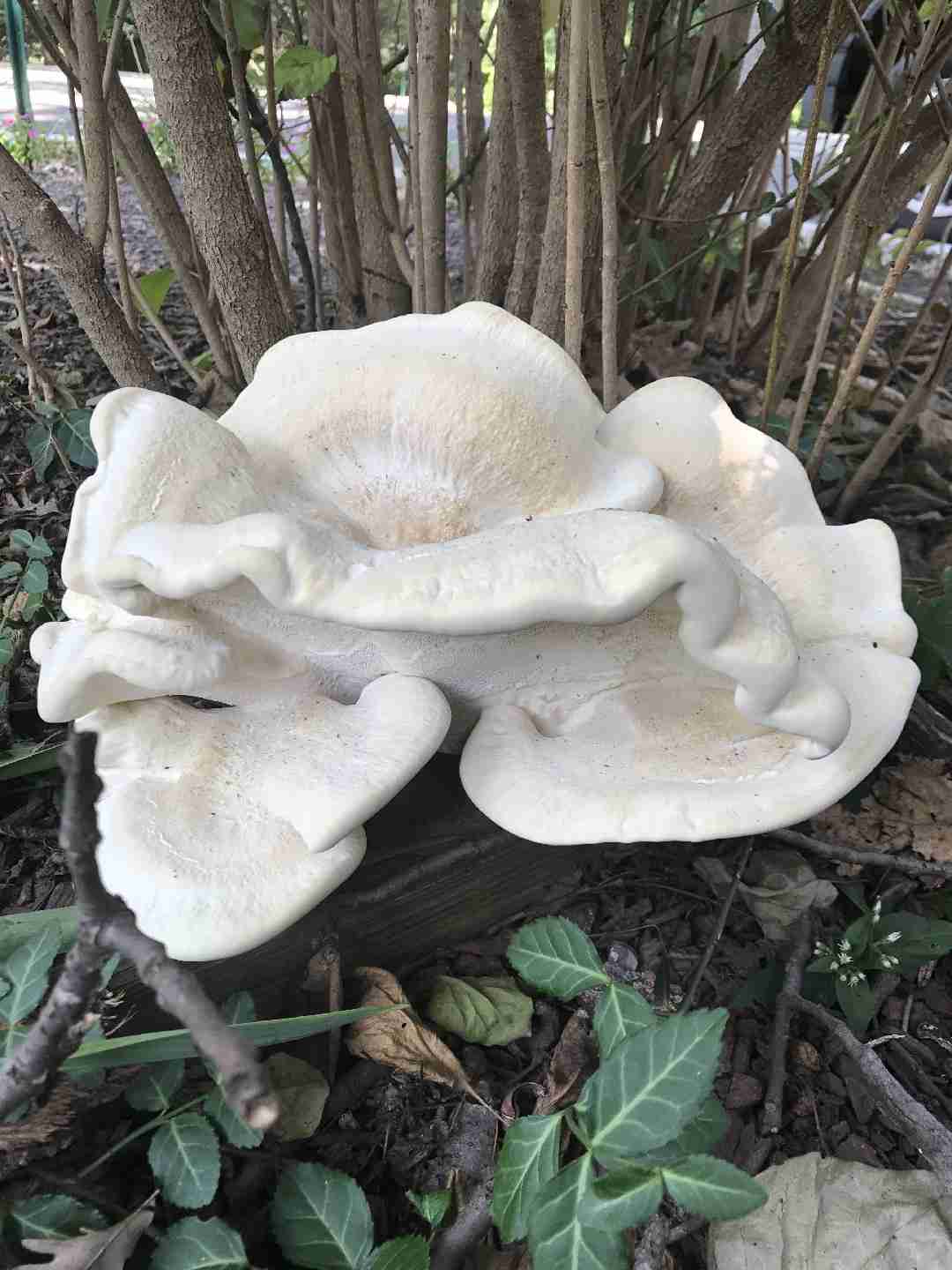
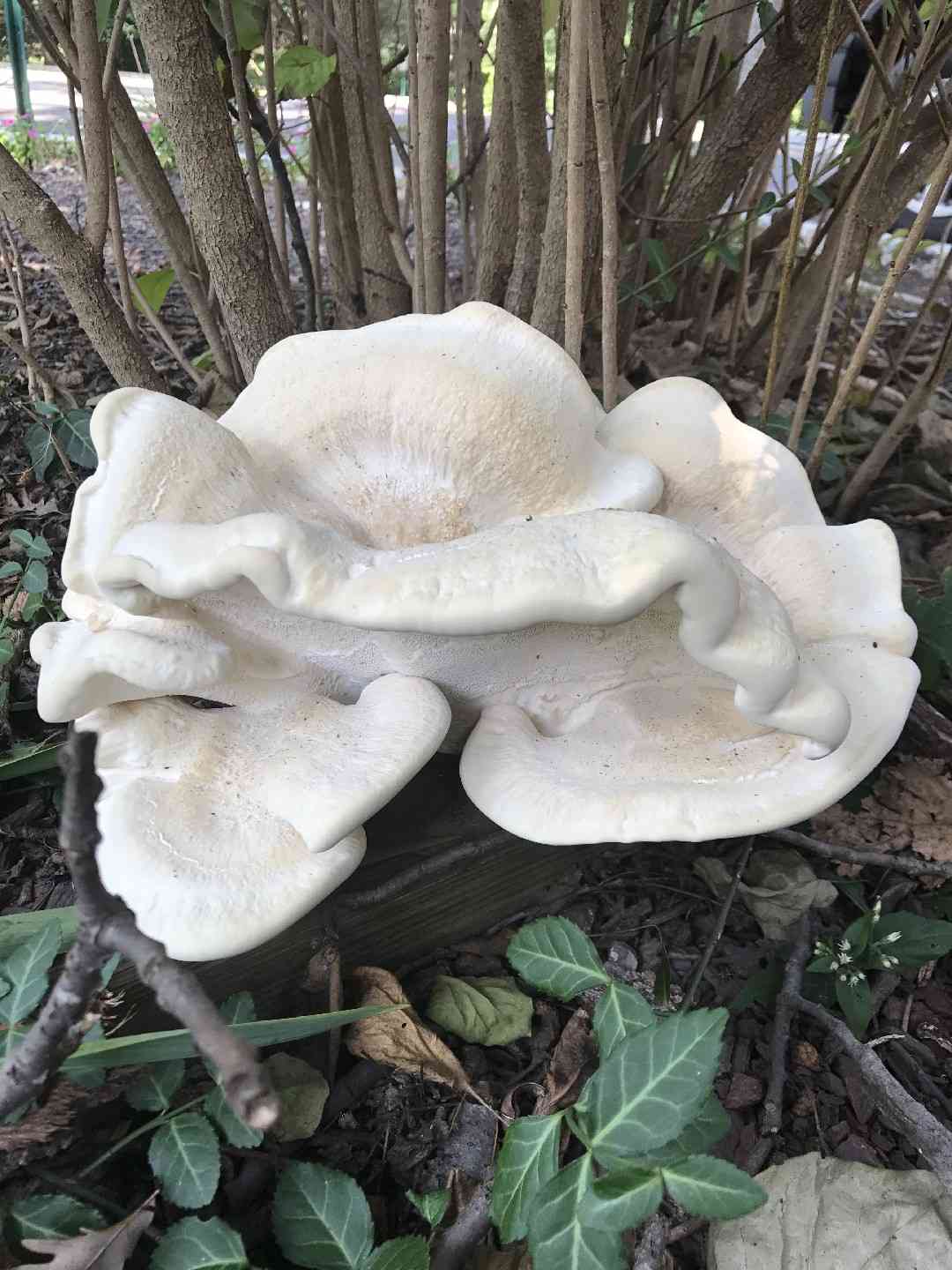
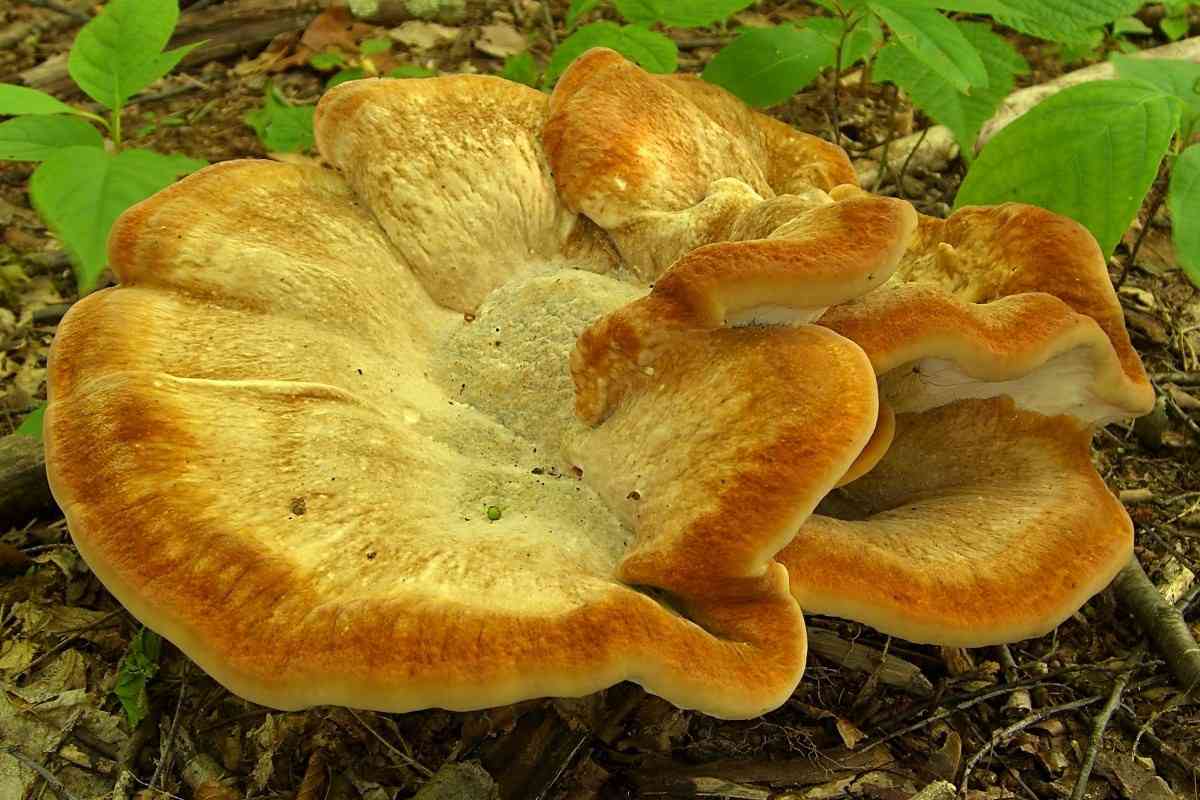
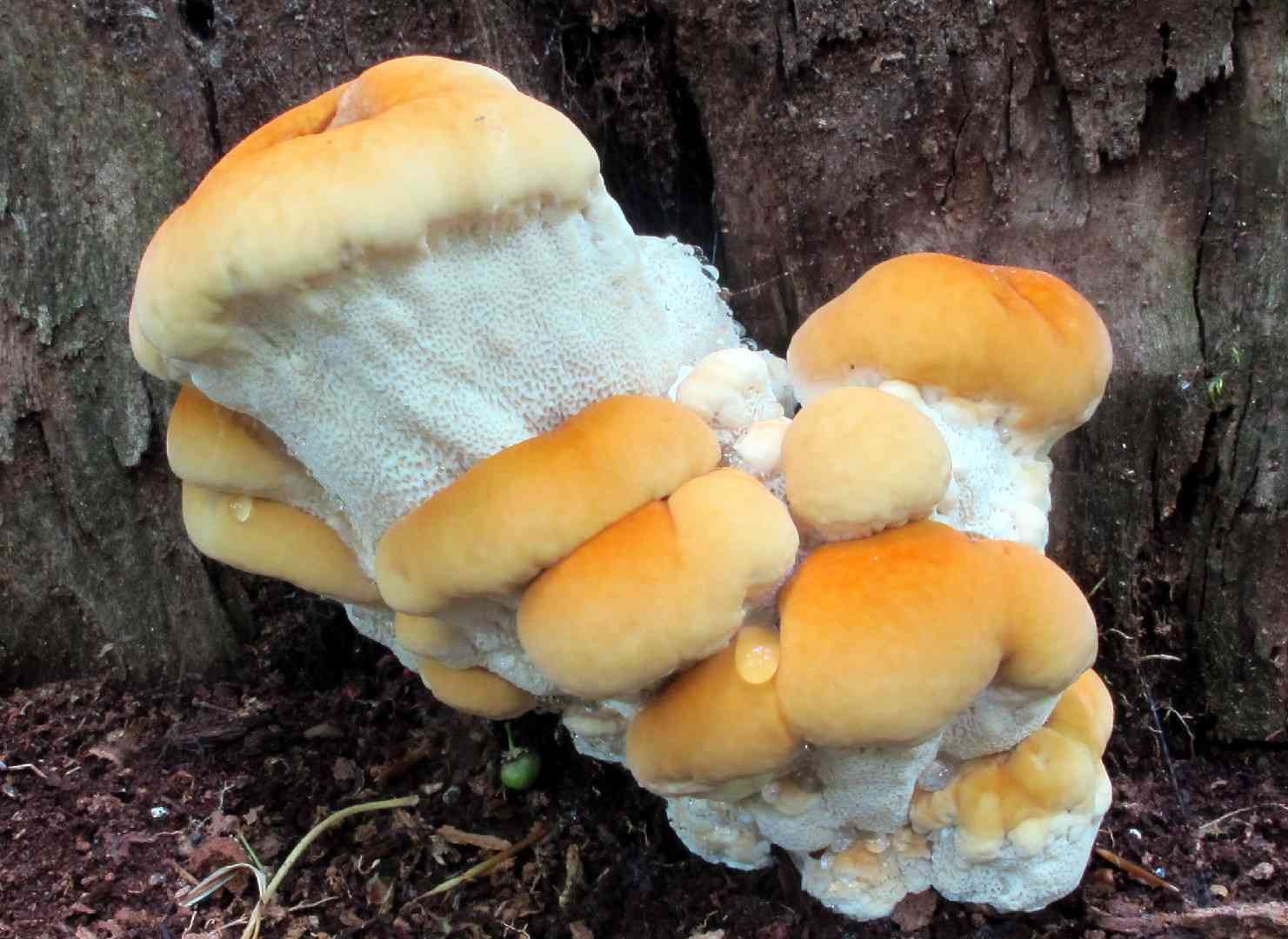
Berkeley's polypore
Bondarzewia berkeleyi
A species of Bondarzewia.
The Berkeley's polypore (Bondarzewia berkeleyi) features elegant, creamy off-white caps that radiate outwards, measuring between 8 cm and 30 cm from a central stalk. This stalk is commonly anchored to a decomposing tree or log. Its scent is characterized by a subtle earthy and bitter aroma.
In This Article
Attributes of Berkeley's polypore
Cap Diameter
5 - 30 cm
Height
10 - 30 cm
Cap
Cap 6 - 25 cm across; kidney-shaped, irregular, flat; whitish to pale tan
Cap Shape
Convex, Flat, Depressed
Cap Surfaces
Velvety
Stem
Stem 4 - 10 cm long, 3 - 5 cm thick; yellowish to pale brownish
Stem Surfaces
Smooth to slightly fibrous
Flesh
Thick; white; not discoloring or bruising
Ring
Ringless
Spore Print Color
White
Odor
Mild, indistinct mushroom-like smell.
Body Color
BrownYellowWhiteCream
Flesh Bruises
The flesh or milk does not discolor when bruised or cut.
Growth Form
Solitary, Gregarious
Nutrient Gathering
Saprophytic, Parasitic
Substrate
Dead Woods, Wood of Living Trees
You can find Berkeley's polypore by these plants
Oaks, Populus, Elms, Spruces
Occurence Habitats
Deciduous Woodland
Species Status
Widely distributed
Endangered Species
No
Scientific Classification of Berkeley's polypore
Phylum
Club fungi
Class
Mushroom-forming fungi
Order
Russulales
Family
Bondarzewiaceae
Genus
Bondarzewia
Toxicity and Edibility of Berkeley's polypore
Is Berkeley's polypore Toxic?
Toxicity information is not available for this mushroom. Always consult with an expert before consuming any wild mushrooms.
